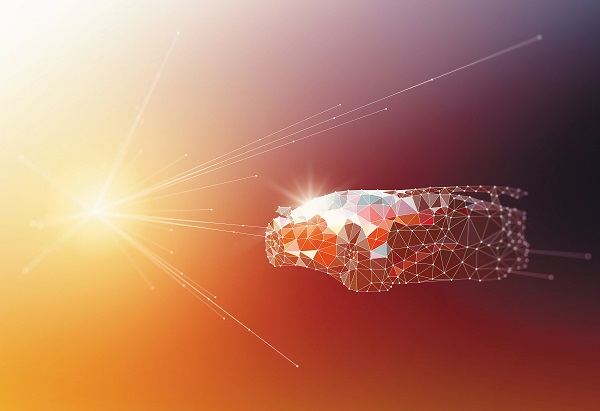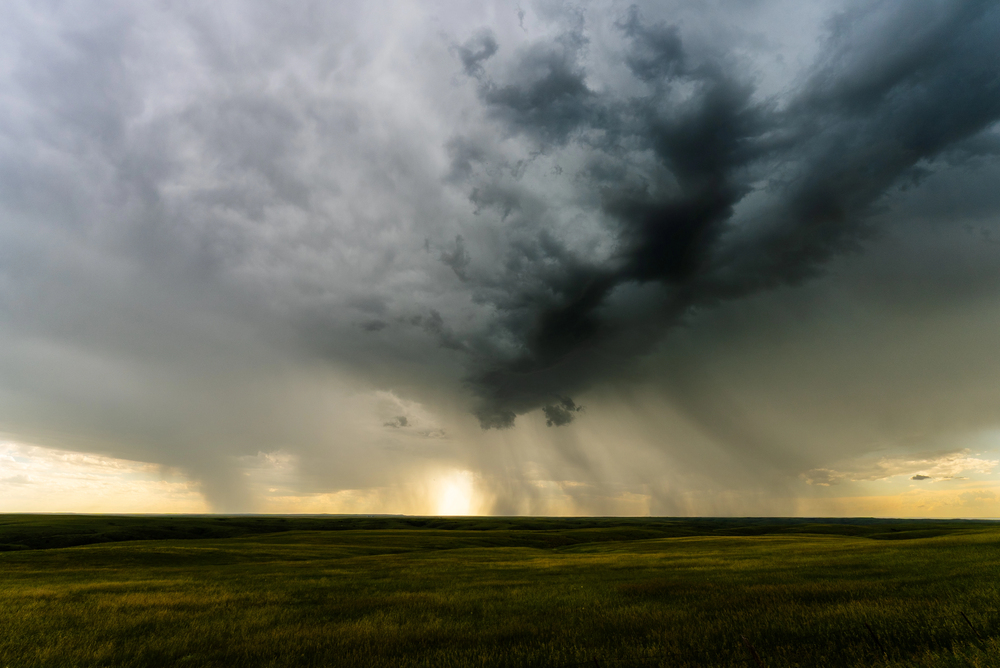Hands-Free: Who Is Liable When No One Is Driving?

By: Chris Boggs
Those of us who grew up watching Knight Rider dreamed of owning a car like KITT. One that could come when we called it and drive for us while we sleep or read. Of course, some of us also wanted a bulletproof car with a flamethrower hidden in the trunk—but I digress.
In reality, most of us would feel more than skittish turning over full control to the car. Human nature generally won’t allow such a drastic departure from tradition, which is why auto manufacturers make incremental technological changes. Automotive generations are similar to human generations and last a similar amount of time, which is around 17 years.
A year ago, I test drove a new vehicle equipped with auto-stop technology. As I was driving, the salesman said: “You’ve got to trust me on this. Set your speed and auto-stop; take your foot off the gas and resist the temptation to hit the brake.”
As we cruised along at nearly 60 mph, we approached a line of stopped traffic. Of course, I wanted to use the brake and stop the car. “Don’t do anything,” the salesman said. And guess what? I never touched the brake and the car stopped on its own.
My experience is just one step toward fully autonomous technology and one we humans are willing to accept—for now. Several more incremental steps must be taken before we are willing to give up control of our vehicle, which will take time.
How Do We Get There?
Essentially, fully autonomous vehicles will not dominate the roadways until infrastructure and social acceptance converge. To move through the automotive generations and arrive at a fully autonomous society, the automotive industry must maneuver through several levels of vehicular autonomy. Each successive level presents unique liability issues, including:
Phase 1 | Driver-controlled with autonomous assistance. This is where vehicles are now. Modern vehicles are already equipped with and utilize autonomous assistance. Some technology provides minor assistance: examples include technology that notifies the driver when a car is in its blind spot; lane departure warnings and audible notifications when an object is close to the car; technology that slows or stops the car in an emergency; and hands-free parallel parking.
Phase 2 | Autonomous for key functions. This technology already exists but is found in only a limited number of brands or the most expensive vehicles. Autonomy of key functions includes the ability of the vehicle to drive itself on major roads and return control to the driver when navigating secondary and other streets. This technology utilizes advanced acceleration and braking technology, but the vehicle cannot predictably or safely navigate traffic lights, stop signs or traffic conditions, which means a driver is required.
Phase 3 | Optional vehicle autonomy. A driver is still needed, but most driving decisions are turned over to the vehicle. At this level, the driver may simply input the desired destination and allow the car to autonomously navigate major and some secondary roads, but only in areas where the necessary infrastructure is in place. Certain traffic situations and conditions may be beyond the technology’s capabilities.
Phase 4 | Infrastructural technologically limited autonomy. Vehicles can operate on a fully autonomous basis; the only area lacking is infrastructure. At this level of transition, all new vehicle technology outperforms a human driver. However, not all roads are equipped to assist the vehicle, requiring a human driver to be available to take control when needed.
Phase 5 | Fully autonomous. This is the point when vehicle technology and infrastructure technology converge. All new vehicles have the necessary technology to operate without a driver, and all roads are equipped with the necessary technology to effectively drive the vehicle. No driver is needed; just a destination.
The question is, how many automotive generations are necessary to move through these five phases? The answer depends on the speed of technological development, technological installation and, most importantly, social acceptance. As the driver becomes less important, the concept and assignment of legal liability may shift. But such a shift may take some interesting twists and turns.
Who Is Legally Liable?
Before addressing the changing assignments of legal liability, a few basic concepts must be understood. First, how is a person or entity assigned legal liability for injury or damage? Legal liability is imposed by the courts on the person or entity responsible for the injury or damage suffered by another party or individual.
Legal liability exists when:
- The wrongdoer is found guilty of “negligent conduct.”
- The injured party suffers actual damages.
- The wrongdoer’s “negligent conduct” is the proximate cause of the injury or damage.
Whether increased vehicle autonomy alters the concept of negligent conduct is the most important question in the autonomous vehicle discussion. Negligent conduct is created by the failure of the person to act or behave in the manner that a reasonably prudent person would act in the same or a similar situation. Therefore, to be guilty of negligent conduct, there must be “a duty to act or not act in a certain way” and “a breach of that duty.”
As the driver becomes less important to the operation of the vehicle, their duty changes. As vehicles become more autonomous, it is safe to assume that duty migrates away from the driver. But to whom does the duty migrate?
Assigning Liability During the Automotive Transition
This is an oversimplification of legal liability assignment, but if the driver, the vehicle or both are at fault for an accident that results in injury or damage, here is an explanation of where the liability is placed in each of the previously discussed phases.
Phase 1: The driver is still primarily in control and is responsible for using the technology to make better decisions. Because the driver is in control, legal liability is assigned to them.
Phase 2: The driver shares control of the vehicle with the vehicle. However, the driver must make the decision when they should turn control over to the vehicle. In some situations, even if the vehicle is equipped for the conditions, the best decision is for the driver to take charge. If the driver failed to act as a reasonable and prudent person would in the same situation, they may be found legally liable because they didn’t take control away from the vehicle in unusual situations.
However, consider this possibility: could liability be placed upon the driver because they took control away from the vehicle when the vehicle may have been better equipped to address the situation?
Phase 3: At this transitional phase, it may be proven that in many, if not most, situations, the vehicle is much better able than the human to operate safely. However, there are still situations in which the human must take control, such as in locales that do not have the necessary infrastructure and in complicated driving situations.
If the driver fails to take control when deemed prudent by the court, they may be held legally liable for any injury or damage because they let the car decide. And as stated above, there is a possibility that the driver could be held legally liable because they took control away from the car.
However, this phase adds a new twist. What if the technology fails? If it is proven that the driver was correct in allowing the vehicle to be in control, but the car still caused an injury or damage, what then? Who is assigned liability? Is it the manufacturer? Is it the software company? Maybe it’s the garage that last worked on the program? Or is it assigned back to the owner because the manufacturer, software company or other entity had the driver sign a contract requiring them to indemnify and hold them harmless for any injury or damage resulting from the failure of the technology? There are more questions than answers.
Phase 4: The driver may be found legally liable in situations when the car warns them that they are entering an area where the technology doesn’t support the fully autonomous use of the vehicle. If the driver fails to take control, they will likely be held liable for injury or damage caused as a result. But again, what if the technology fails?
Phase 5: A reasonable assumption is that no liability will be placed on the passenger. If, and this is a big if, the vehicle is involved in an at-fault accident, the technology is at fault. But again, who would be assigned blame? The manufacturer, the software company, the municipality for failure to maintain the infrastructure or the high-tech garage that worked on the computer last? Or, will owners be asked to contractually protect these entities?
As drivers take less control of vehicles, liability may shift. Initially, drivers and vehicles share responsibility for vehicle operation with more responsibility moving to the vehicle as we progress through the phases. Whether the driver is held legally liable may depend on the decisions the driver makes to give up or take control of the vehicle.
Once the car is in total control, who is assigned liability if an accident occurs remains a mystery. How many defendants might be on the stand? And how long might it take to decide who is responsible? How long might the injured party have to wait before being indemnified?
A more typical scenario during these transitional phases will likely involve vehicles at different phases of this transition. Because of the concept and application of automotive generations, one vehicle may be a phase two vehicle and the other a phase four vehicle. When two levels of technology are involved, assigning liability may become more complicated.
It may be easy to assert that the vehicle with the highest level of technology is the victim of the vehicle with the lowest level of technology. Although on the surface this sounds plausible, both phases still require human intervention, though at different points. Because humans are involved, the question remains of who is legally liable. Plus, the technology may fail.
Ultimately, assigning legal liability may become more difficult and take longer. Look out for twists, turns and the unknown on the road ahead.
Chris Boggs is Big “I” executive director of risk management and education.










